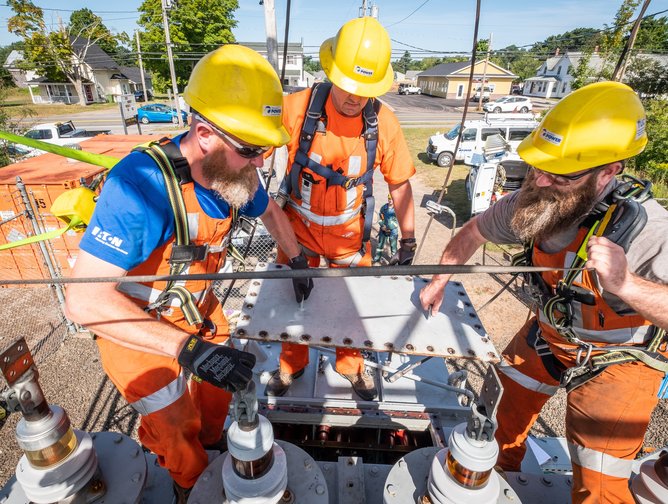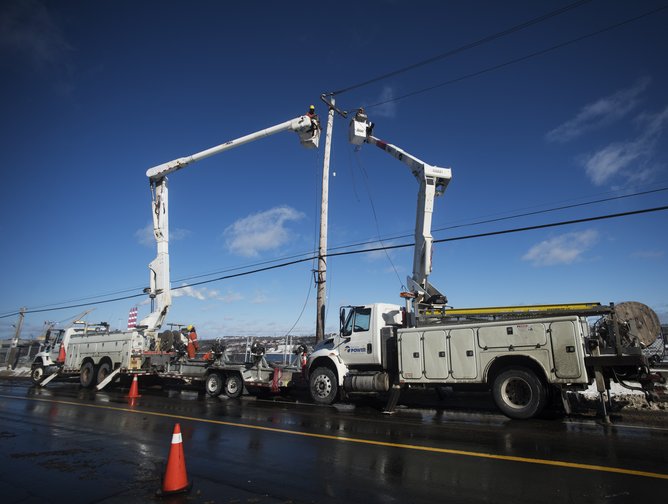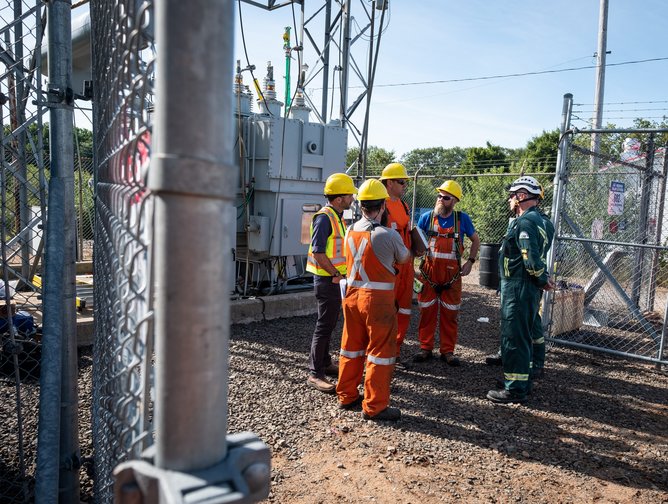Nova Scotia Power (NSP) is a fully-integrated power utility proudly serving 500,000 residential, commercial and industrial customers across the province as its primary electricity provider since the early 1900s. A 1,700 strong team help manage $4.1bn worth of generation, transmission and distribution assets producing more than 10,000 gigawatt hours of electricity each year.
To keep up with an ever-evolving industry which is increasingly focused on sustainability, the power giant is embracing radical change with a move away from coal and oil-based generation. The shift to renewables prompts the need for significant transformation across the business to meet its 40% renewables target by 2020. Utilising a fuel mix of hydro, tidal, wind, coal, oil, biomass and natural gas to generate electricity, its facilities can produce as much as 2,453 megawatts of electricity delivered across 32,000 km of transmission and distribution lines throughout Nova Scotia.
Mike Greene, Operations Technology Leader at Nova Scotia Power, is spearheading efforts to develop more flexible systems to manage its assets and both modify and optimise maintenance strategies. Preventative and predictive maintenance, along with surveillance activities and a more holistic and repeatable approach, are being leveraged to determine the company’s ongoing investments in its assets. Since 2010, NSP has been building an asset management function to care for all areas of the business under the same philosophy and regime. “Our goal is to understand their criticality to the business and put in place maintenance strategies that deliver intelligence about our equipment's condition or health, so we're able to risk-profile all of our major assets,” explains Greene.
NSP’s quest is to implement a sophisticated approach towards the application of technologies capable of condition-based maintenance and monitoring with predictive techniques to gather intelligence about its assets. Greene aims to bring them into a single environment to develop rules, rule engines and algorithms, applying pattern recognition tools to better understand asset health and guide decision making on maintenance and investment. Greene’s colleague, Senior Technical Advisor Rob MacNeil, reveals more sensors are now being deployed in the field. “We’re able to instantly see impending health issues,” he says. “Pattern recognition that absorbs our sensor information and applies principles to find anomalies and give us early alerts, is rolling up all of our intelligence – from preventative and predictive maintenance to predictive analytics and operator surveillance – into the rules engine to offer an improved real time view of our assets.”
The positive impact on efficiency has been felt across the business. Previously the technical team would spend time searching for and managing information but less time actually doing high-end analytics. One of the goals for NSP’s asset management program has been achieved: to provide intelligence capable of delivering actionable insights from good data. The challenge lay in making sure the program’s deployment was smooth in providing a platform its users could trust. “We didn’t want to deploy the technology first and then hope to get value from it later,” maintains MacNeil, who notes the importance of defining objectives first and then shaping technology to meet them once trials have proved the solution is scalable. “Mobile technology would be a good example of that. Deploying in one plant, getting it right, and then moving on to other plants and minimizing organisational churn.”
Greene echoes the need for experimentation with pilot schemes to achieve lasting results from a range of vendors. “In the new world of cloud deployment and software-as-a-service, it's easy to find software to fill certain niches,” he says. MacNeil notes the importance of evaluating providers, so that NSP does not just purchase an off-the-shelf solution but looks at broad fleet-monitoring tools. “Digital application in our industry is still relatively new, so finding major partners who share our philosophy is very important to us… We're often pushing the boundaries of their own technical capabilities, so we're both investing in the future together.”
Across the industry, platforms are evolving into the cloud which need to integrate within existing infrastructures. “With some of the vendors we're now looking at apps that we can deploy on iOS devices as we look at the tools of the future for our mobile workforce,” reveals Greene.
Greene and his team are keen to drive operational intelligence. “Do we need to do something now? Can we wait six months? Can we ignore it and just monitor it until it is taken offline permanently? Because within our industry in Nova Scotia and in some of the North American utilities we have the ultimate aim of reducing our coal fleet,” he explains.
In working towards that, MacNeil highlights the need to be systematically flexible as the use of assets change. “Where some units would have been base-loaded in the past, now they're cycling, so you cannot maintain them in the same way. They have new failure mechanisms that need to be considered, and therefore your maintenance strategy and activities need to change.” By taking a holistic approach to asset management, unlike more traditional environments where each plant makes its own decisions, NSP are able to make portfolio decisions. “We’re confident our investment dollars are going where they need to be,” says MacNeil. “We’re meeting the mission of each unit… It might be a base-load unit, a two-shifting or a flex unit. It might be a unit that needs to retire in a short amount of time. This process of detailed risk understanding enables us to function in those variety of realities for various generating assets, and therefore we're hitting the right risks.” That positive impact can defer outages to the end of the life of a unit saving millions of dollars.
Continuing its asset management mission has been vital for NSP and is transforming the way it uses all of its generating units as deep operational experience is applied to change. How has the process helped with Nova Scotia Power’s renewables goal? “It’s part of our corporate philosophy to develop a greener portfolio of generation,” says MacNeil, who finds the tools, systems and processes designed for NSP’s traditional generation also fit well in the renewable world with, for example, wind farms. “Our distributed-generation assets lend themselves to the digital technologies and communication tools we're deploying. We've learned that the infrastructure we’ve established is well suited for renewable assets and that’s a win for us.”
For Greene, the right combination of people, processes and technology is paramount to future success: “There's no one aspect that can be ignored so we put equal emphasis on all factors… Change management and continuous improvement are a big part of the equation. For us, they're not just add-ons. It comes back to the dedicated nature of our team. We're not doing this part-time; we're fully invested in sustaining these processes and reaping the rewards.”






- Coforge: Arming Financial Firms with the Tools to InnovateDigital Transformation
- Coforge: Arming Financial Firms with the Tools to InnovateDigital Transformation
- MWC24: Harnessing AI to Modernise Telcos with Tech MahindraDigital Transformation
- Big Ass Fans' Journey Through Digital TransformationDigital Transformation

